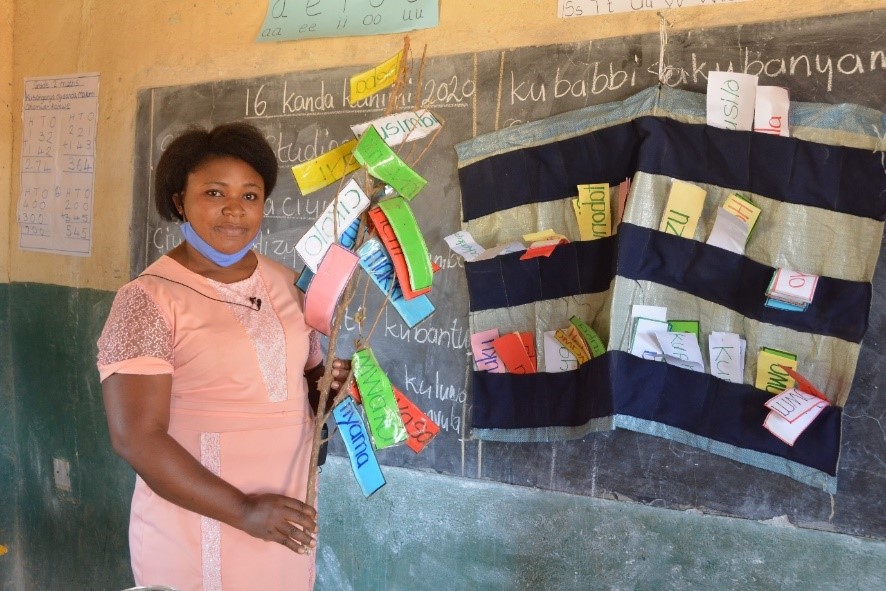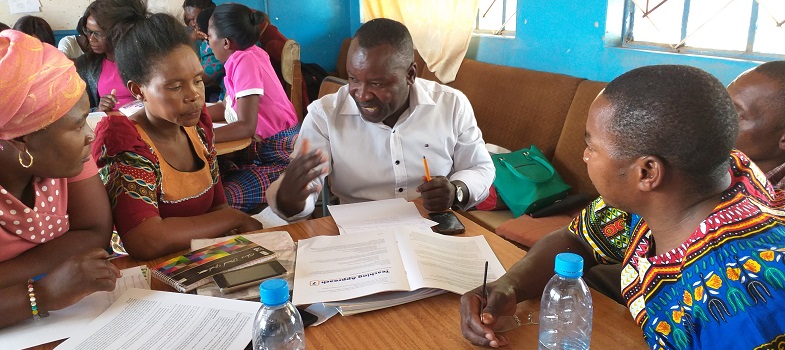Training guide
3. Supporting reading and writing through active teaching and learning
3.2. Working in the home language
With young learners, it is important to develop their literacy skills in their home language. When children learn to read and write in their own language, they learn more quickly. This is because they can already communicate in their home or first language. They can use their first-language knowledge to predict or make good guesses at the meanings of a new language. In this way, children are more likely to become natural writers and readers, just as they are natural speakers. This means that it is easier for you to design active lessons that link learning in school to children’s home life.
As learners progress in their schooling, you can still draw on the local language to support all learners. Some learners might find it easier to understand a new concept in science or social studies if one of their friends explains it to them in their own language. Making use of learners’ home language can help you to involve all learners in the lesson and also to monitor their learning.
Activity 5.4: Using local resources to support home-language literacyWatch this teacher as she describes how she uses local resources to develop her Grade 1 learners’ literacy skills in their home language. You should recognise this teacher as you have already seen videos of this teacher using her resources in previous courses. Being able to read involves:
As you watch the clip, think about which of the three bullet points above are being focused on by the teacher, and why. Make sure you write your thoughts in your Teacher Notebook to share with colleagues. Think about how you can use locally available resources to develop your learners’ literacy skills. Remember to speak with your colleagues to share ideas and resources they might have used already. |

Local resources to support home-language literacy in a social studies lesson. Some of the photographs in this resource were taken during the COVID-19 pandemic in 2020 so face coverings and social distancing appear.
